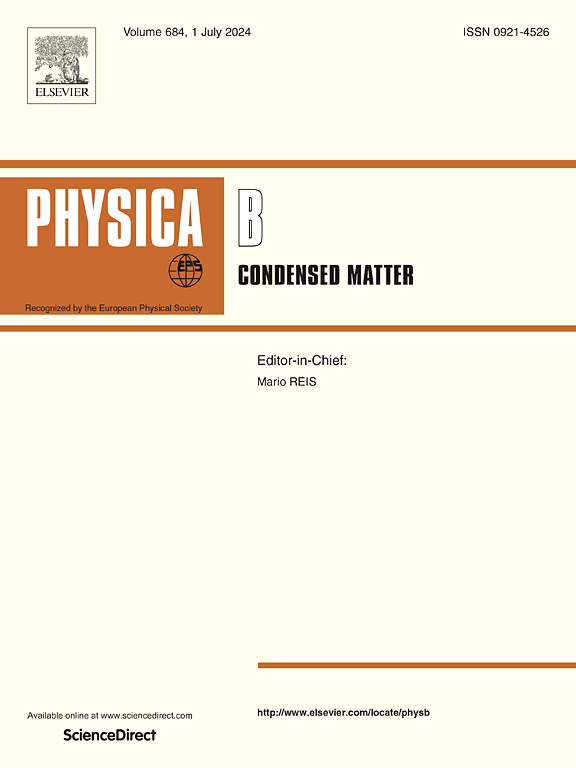A DFT based investigation of structural stability, optoelectronic and magnetic characteristics of cobalt doped BeS
IF 2.8
3区 物理与天体物理
Q2 PHYSICS, CONDENSED MATTER
引用次数: 0
Abstract
Herein, we computed the magneto-electronic and optical attributes of Co-substituted beryllium sulfide at three distinct concentrations by using first principles approach. Studied Be1-xCoxS are stable in cubic phase as revealed from geometry optimization. Spin asymmetric electronic properties reveal their ferromagnetic semiconducting nature for 6.25 % and 12.5 % Co doped BeS while densely doped (25 %) Co-BeS exhibit half metallic nature with 100 % spin polarization. The ferromagnetic ordering was also confirmed by analyzing the obtained magnetic moment integer values which were recorded as 2.99, 5.99, and 11.96 μB for corresponding alloys. Iso-surface spin density plots have also been obtained visualizing the localized magnetic textures. Additionally, the investigation also involves a comprehensive analysis of the alloy's optical features, encompassing critical features including the dielectric function. The findings reveal that at different concentrations, Be0.9375Co0.0625S, Be0.875Co0.125S, and Be0.75Co0.25S, the ε1(0) values are measured to be 6.25, 7.22, and 9.53 eV, respectively. The computed results for optical parameters indicate that the compound demonstrates light absorption in the ultraviolet (UV) region. Consequently, Be1-xCoxS exhibits significant promise as a potential candidate for application in spintronic devices.
求助全文
约1分钟内获得全文
求助全文
来源期刊

Physica B-condensed Matter
物理-物理:凝聚态物理
CiteScore
4.90
自引率
7.10%
发文量
703
审稿时长
44 days
期刊介绍:
Physica B: Condensed Matter comprises all condensed matter and material physics that involve theoretical, computational and experimental work.
Papers should contain further developments and a proper discussion on the physics of experimental or theoretical results in one of the following areas:
-Magnetism
-Materials physics
-Nanostructures and nanomaterials
-Optics and optical materials
-Quantum materials
-Semiconductors
-Strongly correlated systems
-Superconductivity
-Surfaces and interfaces
 求助内容:
求助内容: 应助结果提醒方式:
应助结果提醒方式:


